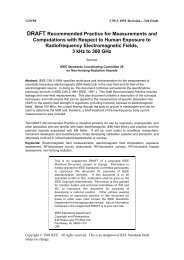An introduction to the quark model
An introduction to the quark model
An introduction to the quark model
Create successful ePaper yourself
Turn your PDF publications into a flip-book with our unique Google optimized e-Paper software.
Few-charge systems His<strong>to</strong>ry of <strong>the</strong> <strong>quark</strong> <strong>model</strong> Mesons Baryons Multi<strong>quark</strong>s and o<strong>the</strong>r exotics Outlook<br />
Chromomagnetic binding<br />
In 1987, Lipkin, and Gignoux et al. realised that<br />
P = ( ¯ Qqqqq)<br />
with (qqqq) = (uuds) or (udds) or (udss)<br />
has <strong>the</strong> same 150 MeV binding below <strong>the</strong> [( ¯ Qq) + (qqq)]<br />
threshold in <strong>the</strong> limit where mQ → ∞ and same assumptions<br />
than Jaffe for <strong>the</strong> light <strong>quark</strong><br />
This was named “penta<strong>quark</strong>” (now, one should say: “<strong>the</strong><br />
chromomagnetic penta<strong>quark</strong>”)<br />
It was searched for in 1 experiment at Fermilab (Ashery et al.),<br />
not conclusive<br />
A re-analysis, including mQ < ∞, indicate that relaxing <strong>the</strong> <strong>the</strong> P<br />
likely becomes unbound<br />
O<strong>the</strong>r configurations analysed, see Leandri et al.<br />
JMR Quark Model

















